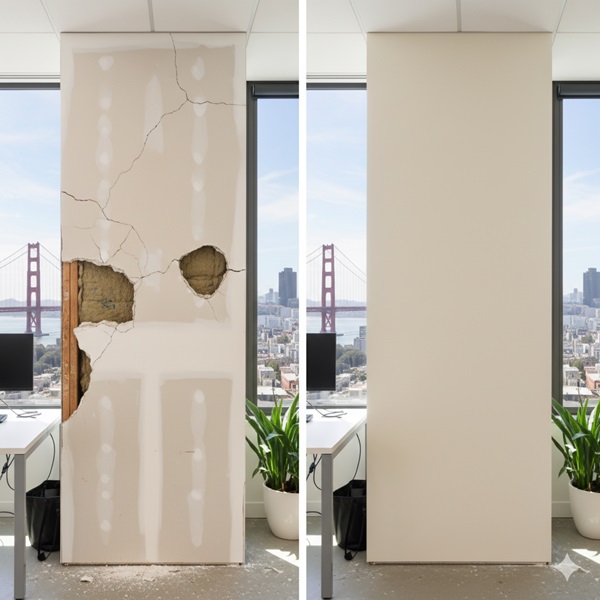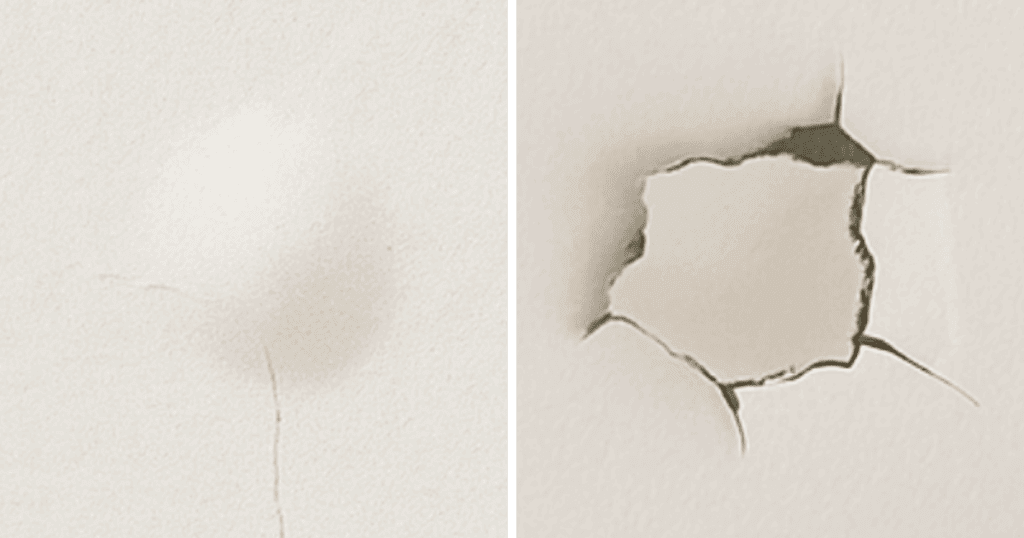Experience the difference of perfectly finished Drywall Repair Ogden UT with expert painting applications.
A Comprehensive Overview to Learning Drywall Repair Work and Installment
This guide supplies a complete exploration of drywall repair and installment, dealing with both novices and seasoned professionals. It describes vital devices, techniques for patching and hanging sheets, and the crucial finishing processes. Drywall Installation Ogden Utah. By recognizing common challenges, people can attain polished results. Mastering these abilities not just boosts one's home however likewise develops confidence in do it yourself endeavors. What fundamental tips will ensure a successful task from beginning to end?
Vital Tools for Drywall Repair Work and Installation
When starting on drywall repair and setup, a couple of crucial tools can significantly boost the performance and high quality of the work. A drywall blade, generally readily available in numerous sizes, is vital for applying joint substance and smoothing joints. A taping knife is also needed for feathering sides and ensuring a smooth finish. Additionally, a drywall saw or utility blade enables accurate cutting of drywall sheets to fit any area.

Step-by-Step Overview to Patching Holes
Covering holes in drywall is a simple process that can bring back the wall surface's appearance and honesty. To start, the area around the hole need to be cleansed and any loose debris eliminated. For tiny openings, a basic spackle or joint compound can be applied with a putty blade. Bigger holes may need a spot; a piece of drywall can be cut to fit the hole, secured with glue or screws, and after that taped around the edges. Once the spot is in place, joint substance is used over the spot and feathery out to mix with the bordering wall. After the substance dries, fining sand is needed to accomplish a smooth coating. The repaired area can be keyed and painted to match the rest of the wall surface. This method assures a smooth repair, boosting the general look of the drywall and maintaining its structural stability.
Methods for Hanging Drywall Sheets
After successfully fixing holes in drywall, the following action entails hanging new drywall sheets to develop a smooth surface. To achieve this, one need to start by determining the wall surface space precisely and reducing the drywall sheets to fit. It is crucial to hang the sheets horizontally for much better structural stability, beginning with the top and functioning downwards.
Utilizing a drywall lift can streamline the process, specifically for ceiling setups. Once placed, protecting the sheets with drywall screws at periods of about 12 inches along the edges and 16 inches in the area is essential. This assures a firm hold and reduces the risk of sagging. For corners, the sheets must be cut to fit well, permitting cleaner joints. It is a good idea to stagger the joints between sheets to strengthen the total structure, creating an extra long lasting surface all set for the next phase in the drywall installment process.
Ending Up Touches: Insulation and Mudding
Completing the drywall installment includes the essential steps of taping and mudding, which ensure a polished and smooth coating. Taping requires the application of joint tape over the joints in between drywall sheets. Interior Painting. This tape can be either paper or fiberglass fit together, with each type offering distinct benefits. After taping, the next action is mudding, where joint substance, or "mud," is put on site web cover the tape and fill any type of blemishes
Utilizing a drywall blade, the substance must be spread evenly, making certain a feathered edge to reduce noticeable adjustments. Numerous layers are usually required, with sanding in between each layer to accomplish a smooth surface area. Cautious interest during this process is crucial, as it significantly influences the last look of the wall surface. With the appropriate method and persistence, completion outcome will be a perfect foundation all set for paint or finishing touches.
Usual Mistakes to Avoid in Drywall Projects

Another typical mistake is not enabling sufficient drying out time between layers, which can trap dampness and jeopardize the coating. In addition, overlooking to feather the edges effectively can produce noticeable lines and blemishes. Ultimately, missing sanding or making use of inappropriate methods might leave harsh areas. By recognizing these challenges, people can greatly improve the quality of their drywall jobs and achieve a professional-looking finish.
Frequently Asked Questions
Can I Fix Drywall Without Expert Aid?
Yes, one can repair drywall without expert assistance. With the right tools, products, and guidance, individuals can successfully handle minor repairs. Significant damage may call for expert knowledge for excellent results and longevity.
How Much Time Does Drywall Substance Take to Dry?
Drywall compound commonly takes between 24 to 2 days to dry totally, depending upon aspects such as humidity and temperature. Thinner layers might dry out faster, while thicker applications call for more time for perfect outcomes.
What's the Best Kind Of Paint for Drywall?
The very best sort of paint for drywall is generally a water-based latex paint. It gives outstanding insurance coverage, durability, and convenience of application, making it ideal for indoor wall surfaces while permitting easy cleaning with soap and water.

Exactly how Do I Stop Mold on Drywall?
To stop mold on drywall, warranty correct ventilation, control moisture levels, utilize mold-resistant materials, and immediately deal with any leakages. Routine Drywall Repair Ogden UT examinations and instant remediation of water damages are also important for long-term avoidance.
Is Drywall Recyclable After Elimination?
Drywall is recyclable after elimination, provided it is complimentary from pollutants like mold and mildew, paint, or various other harmful products. Reusing centers can process it right into new visit this site products, advertising sustainability and lowering landfill waste in building and construction.
When beginning on drywall repair and installment, a couple of necessary devices can substantially improve the efficiency and top quality of the job. After successfully fixing holes in drywall, the following action entails hanging brand-new drywall sheets to create a smooth surface area. Completing the drywall installment entails the vital actions of mudding and taping, which assure a polished and smooth surface. Achieving a sleek finish in drywall jobs can be challenging, and several typical errors can undermine the high quality of the work. Yes, one can fix drywall without expert help.